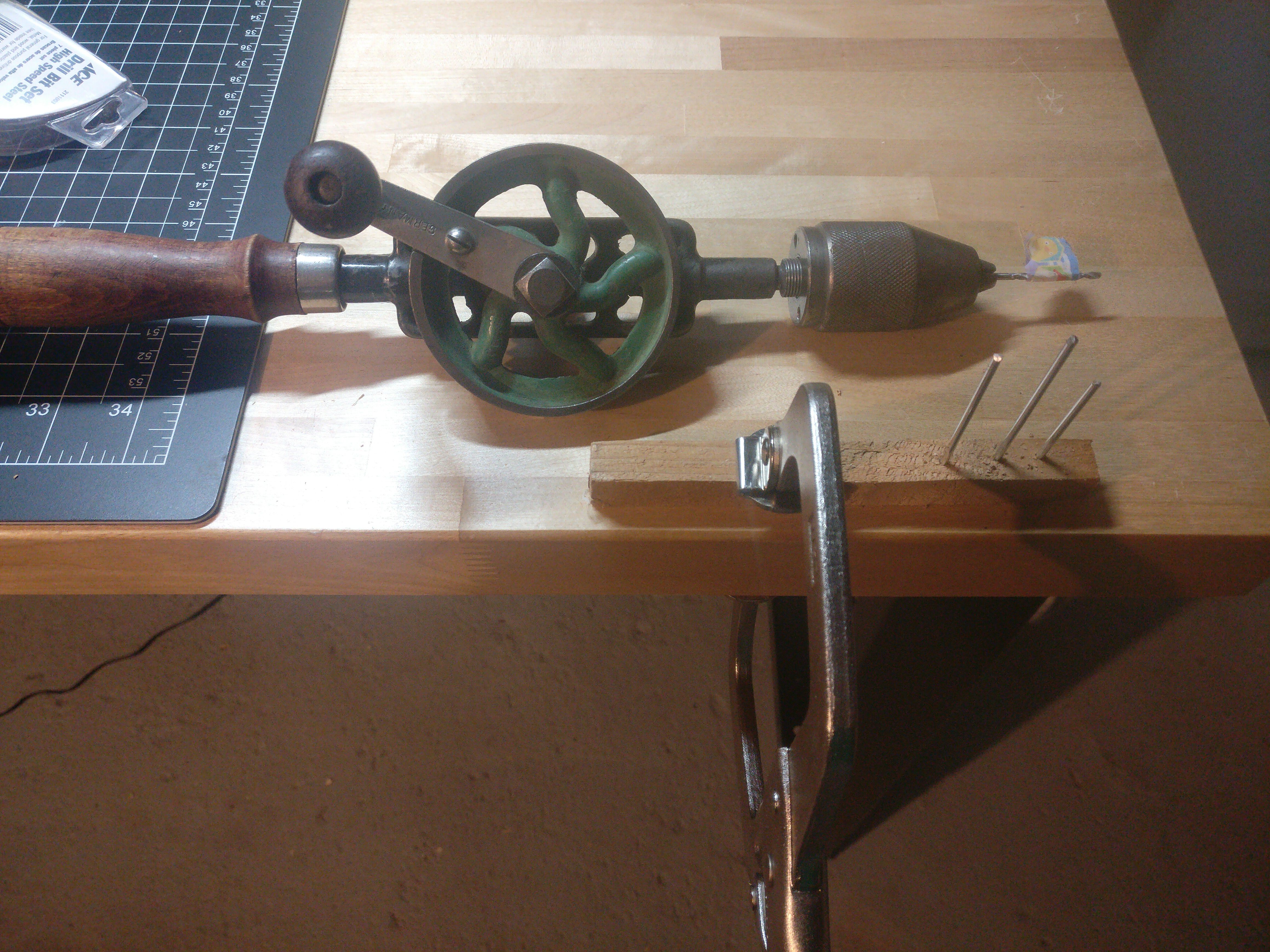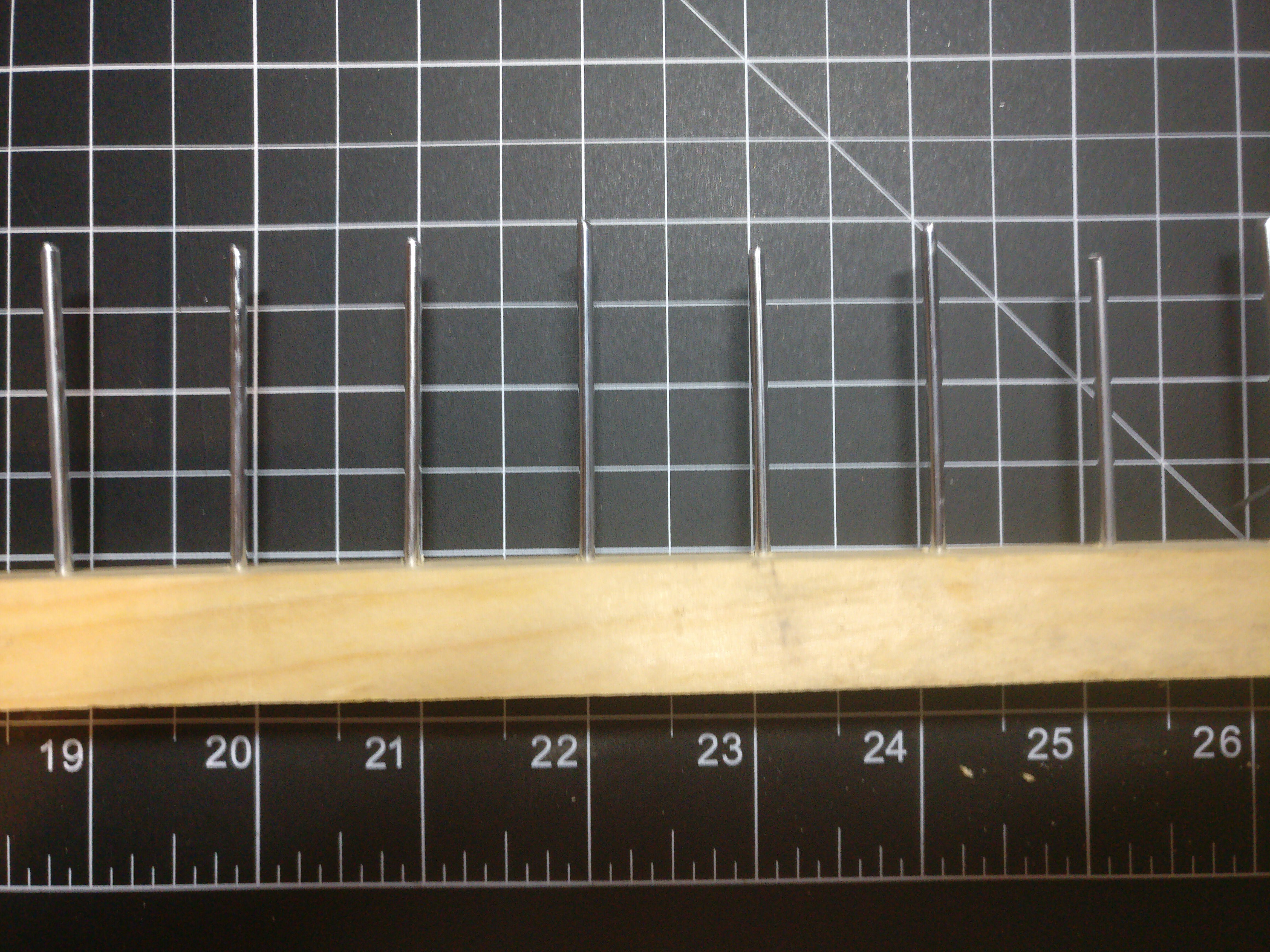this page is a bit out of date! more pictures and a better description coming soon.
materials needed
- square wooden dowel
- a drill with appropriate bits
- marking tool(s)
- welding rods (or other easily cut small diameter rods) – i have used these aluminum rods from McMaster-Carr with success
for a nonpareil, make sure to use tines less than or equal to 1⧸16". i've found that 3⧸32" diameter tines are prone to pushing the carrageenan in undesirable ways.
steps
i mostly use a handdrill and divider to mark out and drill the holes, so if you have fancier tools, you may have a different method. rod length will be determined by the depth of the tray and your personal comfort in how high you want to hold the rod off the edges of the tray. for a 1" deep tray, a 1" - 2" long tine is probably sufficient, not including the depth of the hole in the wood.
- find the center line of your dowel
- set your divider to the tine width and mark out holes at each interval
- set your drill bit to the depth needed (maybe half the depth of the dowel)
- drill drill away! it's not super important for everything to be exactly on the centerline, but it looks nicer that way
- cut your rods to length
- lightly hammer a few tines
- do a test run to make sure that the tines are a length that's comfortable before you finish the rod
- finish the rod and go marble!
the tines are pretty easy to remove with a pliers, so don't worry if some tines are too long and need to be clipped.
miscellaneous notes
rakes have two main measurements: tine width/frequency (e.g. every 1") and tine diameter (e.g. 3⧸32" diameter rods). one could consider tine length, but i've found that it doesn't really matter – in theory one could have a rake such that the barest amount of the tine touches the carrageenan.
generally speaking, if the tine width is high and the tine diameter is high enough, the rake functions more like a solid piece, rather than a comb. this is especially prominent in some nonpareil designs, where carrageenan is liable to be pushed.
the negative effect of this can be compounded when the rake does not extend the full length of the tray. in this case, when the tines are too frequent and too large of a diameter, the rake will act much like a boat going through water. that is, rather than allowing the water to flow through, as if with a sieve, the carrageenan is mostly pushed to the side and flows around the rake, making a wake. this is sometimes a desirable effect.
some pictures
some test holes, when first getting started

close up of a rod - this was made for a rather deep tray, hence the long length of tines

last updated: 2023-10-01 19:40:10